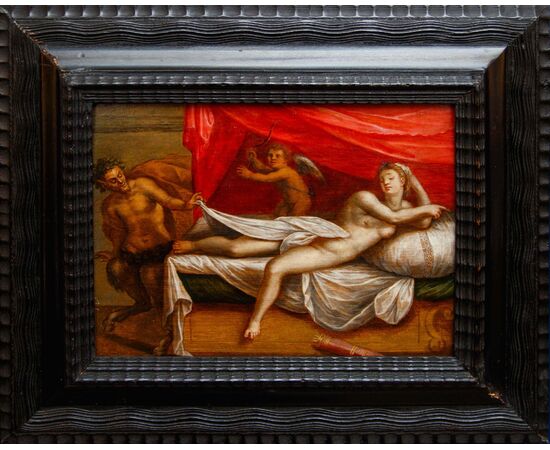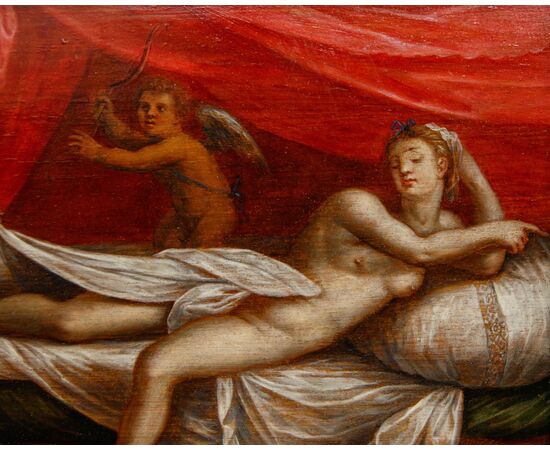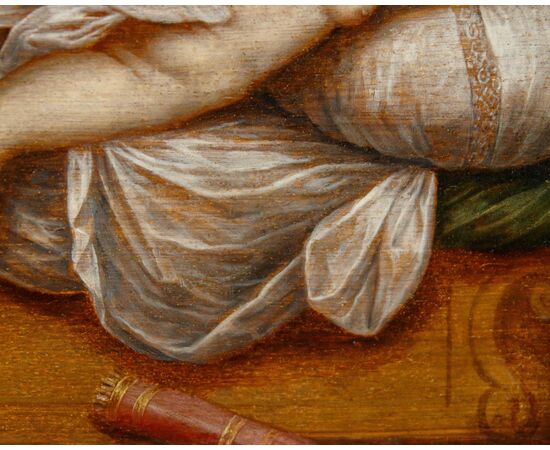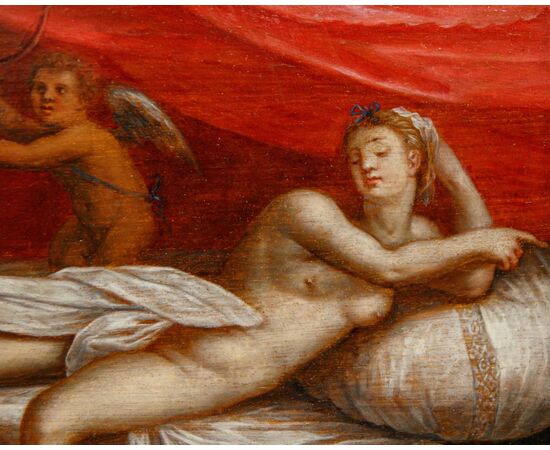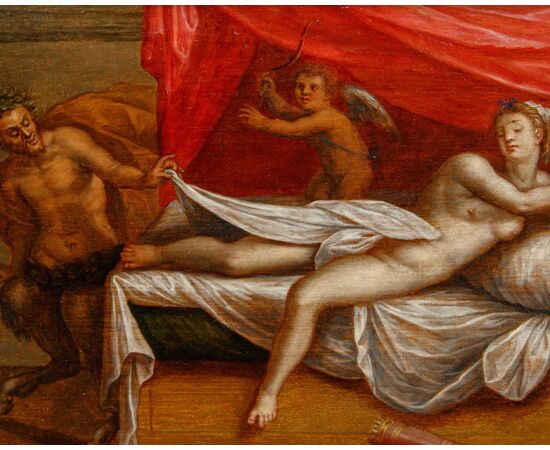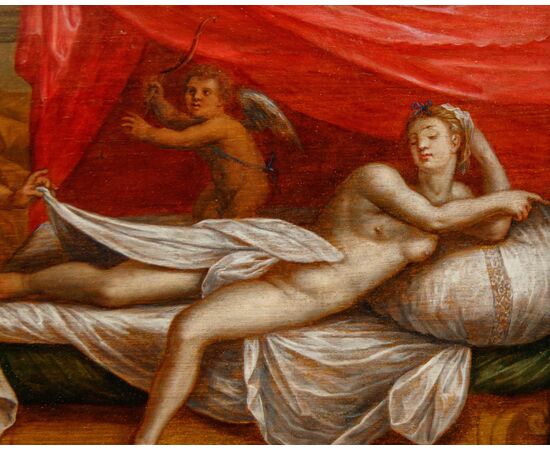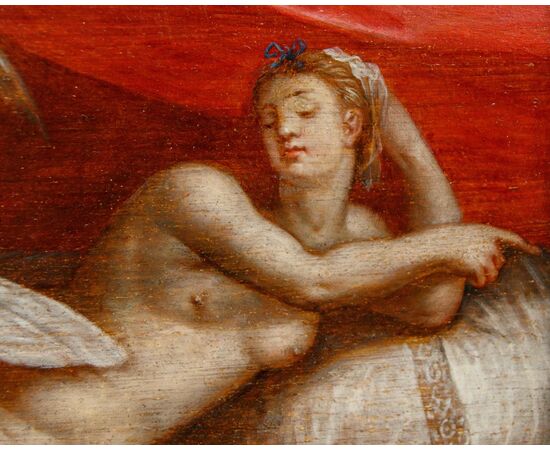Workshop of Lambert Sustris (1515-1520 –1584 approx.), Venus and Cupid Spied on by a Satyr
Workshop of Lambert Sustris (1515-1520 –1584 approx.)
Venus and Cupid Spied on by a Satyr
Oil on panel, 24 x 32 cm
With frame, 41 x 49 cm
The panel described here, attributable to the workshop of Lambert Sustris, portrays a mythological subject very dear to private patrons of the 16th century, as evidenced by the works created by contemporary artists for the collections and residences of noble and wealthy families, both Italian and foreign. The main figure is Venus, accompanied by her son Cupid, both related to the erotic and sensual universe, almost completely nude on a bed where they had fallen asleep; to disturb their sleep intervenes a satyr, perhaps the god Pan himself, who discreetly peers from beyond the red drapery, starting to pull the pure white sheet that covers the goddess's intimacies. The atmosphere could be interpreted as a mythological representation of the pleasures of carnal love, although some parts of the work leave room for further reflection: the desire, earthly and irrational, of the satyr seems to be countered by Cupid's action, launched towards the silenus to prevent him from pulling the curtain and sheet further; moreover, the god's arrows of love are far away, resting beside the bed, and the goddess herself averts her gaze from the unwanted visitor. This contrast between desire and modesty is one of the recurring themes among "chamber" paintings, intended for the strictly private rooms of stately homes and often characterized by themes of erotic content, for the delight of the master of the house. The painting highlights several Mannerist characteristics: the elongated figures and complex poses, the attention to the human form, often idealized and sensual, bright and contrasting colors (the red of the canopy, the white of the sheet and the dark tones of the Satyr create a strong visual impact), dynamism and theatricality (the interaction between the figures and the Satyr's surprise give the scene a sense of movement and drama).
Lambert Sustris (Amsterdam, 1515-1520 approx.– Padua?, 1584 approx.) was a Dutch painter, father of Friedrich Sustris. He trained in Utrecht or Haarlem in the circle of Jan van Scorel or Maarten van Heemskerck. At a young age he visited Rome, as confirmed by the discovery of his signature in the Domus Aurea, and Venice, where he entered Titian's workshop. As a member of the famous painter's entourage, he participated in the Diet of Augsburg in 1548 and 1550, where he returned in 1542 and had the opportunity to portray numerous nobles of Swabia, such as those of the Vöhlin family. Starting in 1543 he painted the cycle of frescoes in the Villa dei Vescovi in Luvigliano di Torreglia. Between 1548 and 1553 he traveled to Augsburg several times; the numerous portraits made for nobles and clergy date back to this period. In the 1560s he settled in Padua, where he presumably died, in an unspecified year after 1568.
His particular fusion of Dutch and Italian style was a decisive model for the development of ideal landscapes of the 17th century.

